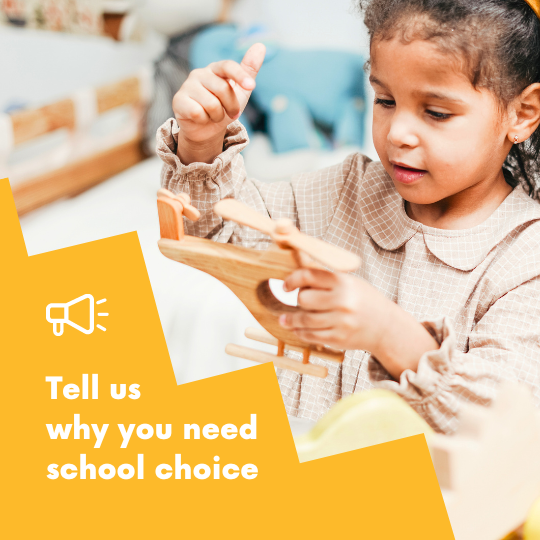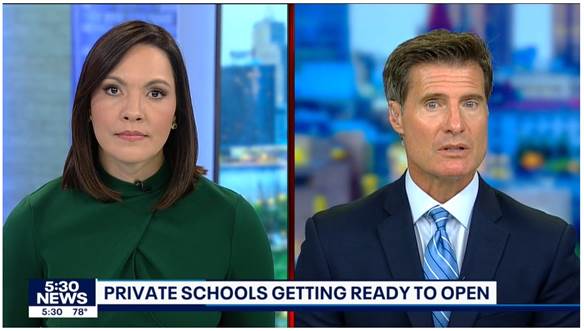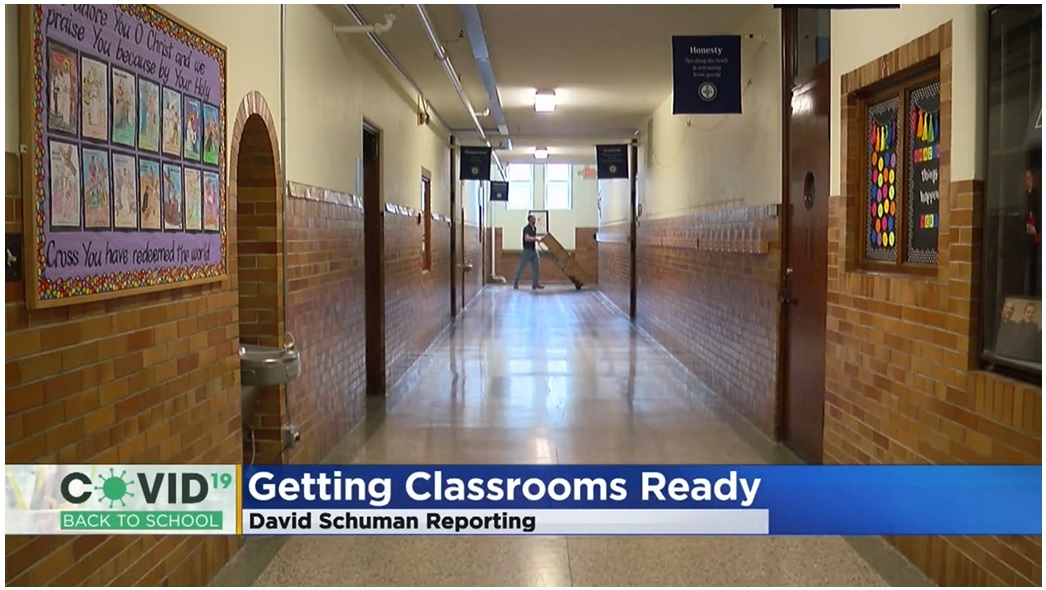More than half of parents say they would choose a school type other than a traditional public district school if given the option, highlighting a continued and substantial disconnect between parents’ schooling preferences and actual enrollment patterns.
The 2025 Schooling in America Survey, conducted by Morning Consult, asked 2,455 current K-12 school parents nationwide about their school type preference — public district school inside residential district, public district school outside residential district, charter school, private school, or homeschool. Fifty-six percent would choose either a charter school, private school, or homeschool, with 44 percent stating they would choose a public district school. Compare that to actual public district school enrollment at 80 percent, charter school enrollment at seven percent, private school enrollment at nine percent, and homeschool enrollment at five percent.
School Type Preference vs. Enrollment, 2025

Why the disconnect?
Choosing a school often involves balancing a wide range of factors, both practical and emotional. Families often start with high hopes, seeking schools that promise strong academics, safe environments, and supportive communities. Yet the path from preference to enrollment is rarely straightforward. Barriers such as location, transportation, and availability can prevent families from acting on their choices. Financial realities add another lay of complexity. As a result, many parents may find themselves settling for schools that differ from their initial aspirations.
For example, location continues to be public school parents’ top reason for choosing their child’s school in 2025. Parents who choose private or charter schools cite academic quality as the main reason for selecting their child’s school. Homeschool parents say a safe environment is their top reason for choosing this school type.
Parents’ Reasons for Choosing a School

Making choice a reality
Will parents always have to navigate trade-offs between what school type they ideally want and what is realistically possible? Perhaps. After all, no single learning environment can meet every expectation parents have for their children’s education. Families often value a combination of strong academics, personalized attention, extracurricular opportunities, safe and supportive classrooms, and social-emotional development — goals that can pull schools in different directions. A school with rigorous academic standards may have larger class sizes than what one family is hoping for. A smaller school with close-knit community support might offer fewer extracurricular options.
Recognizing that no one model can satisfy all priorities highlights the importance of diverse school options and giving families from diverse backgrounds the opportunity to access them.
Through a variety of choice policies, educational aspirations are becoming a reality for more families nationwide. The expansion of public school open enrollment policies, legalizing charter schools, and education savings account (ESA) programs, to name a few, are broadening access, streamlining admissions processes, and offering funding mechanisms that reduce the barriers that force parents to compromise between their ideal learning environment and what is practically available. More families nationwide have the opportunity to select schools and learning environments that better match their priorities, whether that is academic rigor, specialized programs, smaller class sizes, or extracurriculars, to name a few.
In Minnesota, structural barriers such as district boundaries can force families to settle for what is available rather than what is ideal. There are a handful of policy fixes the state could make to its public school open enrollment laws that would help remediate these constraints.
Minnesota policymakers could also implement an Education Savings Account (ESA) program that would open up access to nonpublic schools and support services such as tutoring and special education therapies. Distinct from Coverdell Education Savings Accounts, which are federally regulated, tax-advantaged accounts funded by a family’s personal contributions, Education Savings Accounts are funded by a portion of the state dollars allocated for a child’s public education that then follow that child to the nonpublic school of their choice and can also be used toward other pre-approved educational services. These ESAs operate very similar to how Pell Grants and the GI Bill work in higher education and how Medicaid, Section 8 Housing, and food stamp programs work — public dollars following an individual for use at a private institution.
The disconnect between parents’ preferred school types and where their children actually enroll not only affects individual families but draws attention to the inequalities in access to high-quality education. Closing this gap requires policies and initiatives that expand choice, improve access, and provide clear, reliable information about school options. Who is finally ready to address these barriers?

![[downloaded during free trial]](https://oakmn.org/wp-content/uploads/2025/11/iStock-1430368205-750x375.jpg)









![[downloaded during free trial]](https://oakmn.org/wp-content/uploads/2025/11/iStock-1430368205-120x86.jpg)

